One of the most profound impacts that our human civilization has had upon the natural world is in the creation of ‘Invasive Species’. In brief, an invasive species is a species of animal or plant that we humans have transported from one part of the world to another, sometimes deliberately but more often by accident. Having no natural enemies in its new environment the invasive species spreads rapidly causing destruction to, if not actually displacing native species.
Rabbits in Australia are a well known example of animals that were deliberately brought from Europe to be raised for food by the early British colonists. A few animals managed to escape and found the local environment to their liking. Breeding like rabbits they quickly became an enormous problem that Australians are still unable to completely control.

Having this example, and many others to learn from, today the intentional transportation of species from one part of the world to another is only allowed after careful consideration of the possible environmental consequences. Still, even as we humans have learned not to intentionally cause invasive species the growth of international, intercontinental travel and trade has led to a tremendous increase in the number of accidental invasive species.

The Spotted Lanternfly, Lycorma delicatula, is native to Southern China, Vietnam, Thailand and India where it feeds primarily on Chinese Sumac along with grape vines and stone fruit trees such as peaches. In its natural environment the spotted lanternfly’s population is kept in check by its natural predators and diseases. In its own home the L delicatula was an agricultural pest, but not a terrible one.
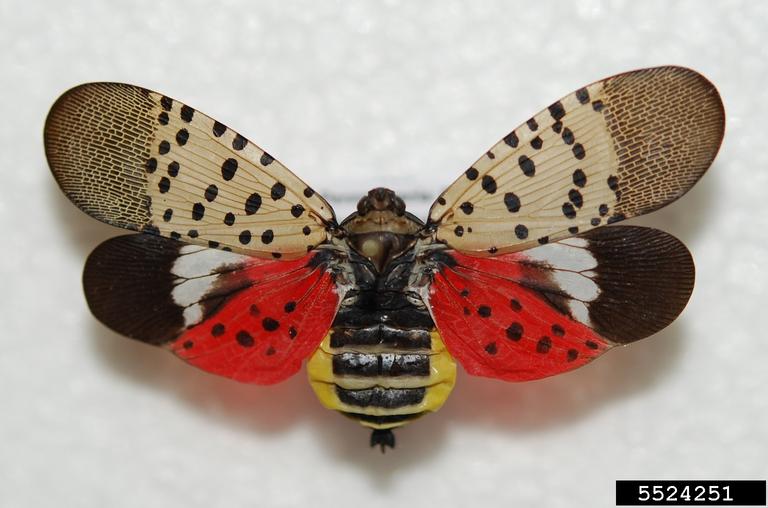
Like most species of insect that live for only one year the spotted lanternfly hatches as a nymph from an egg in late April to early May. As a nymph the spotted lanternfly goes through several stages known as instars. The first instar is black with white spots and bites into the stem of its host plant in order to suck at the plant’s sap for nourishment. Later instar stages add red spots to the white. The adults with their distinctive wings can appear as early as July and will mate and lay their eggs in September.
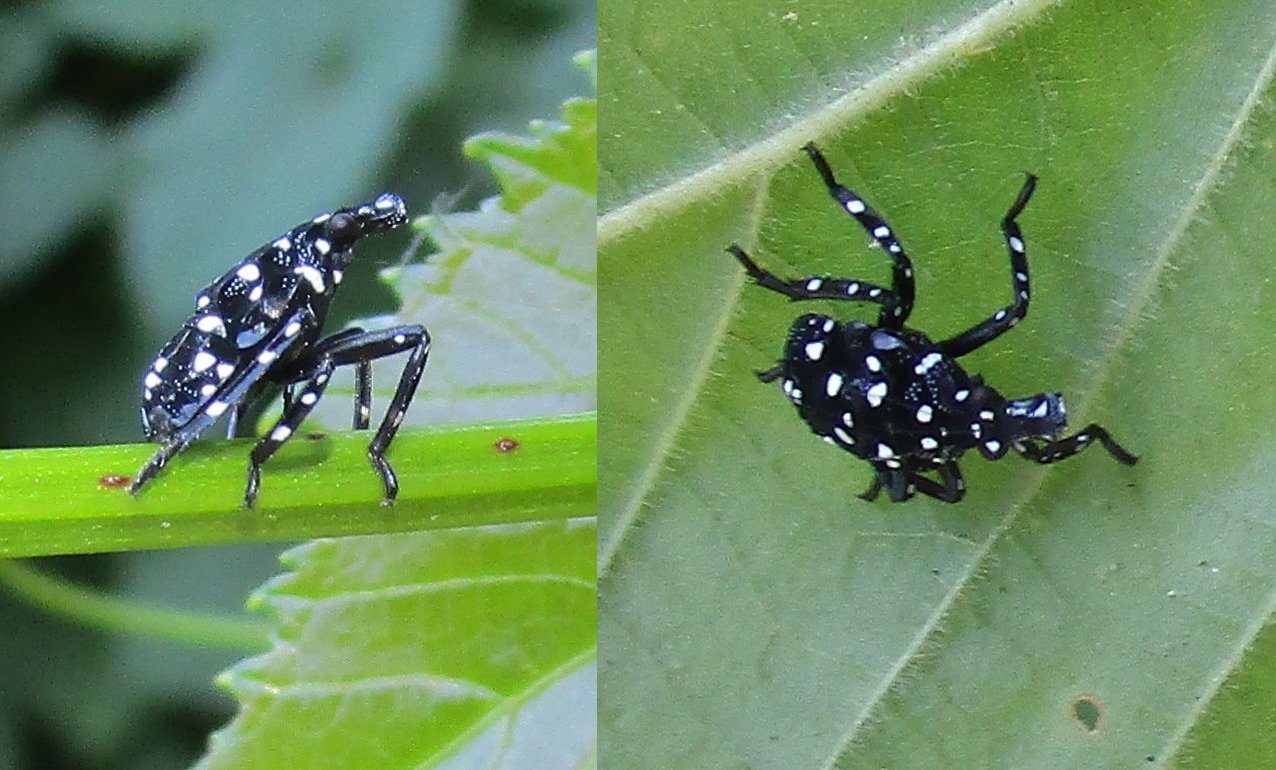
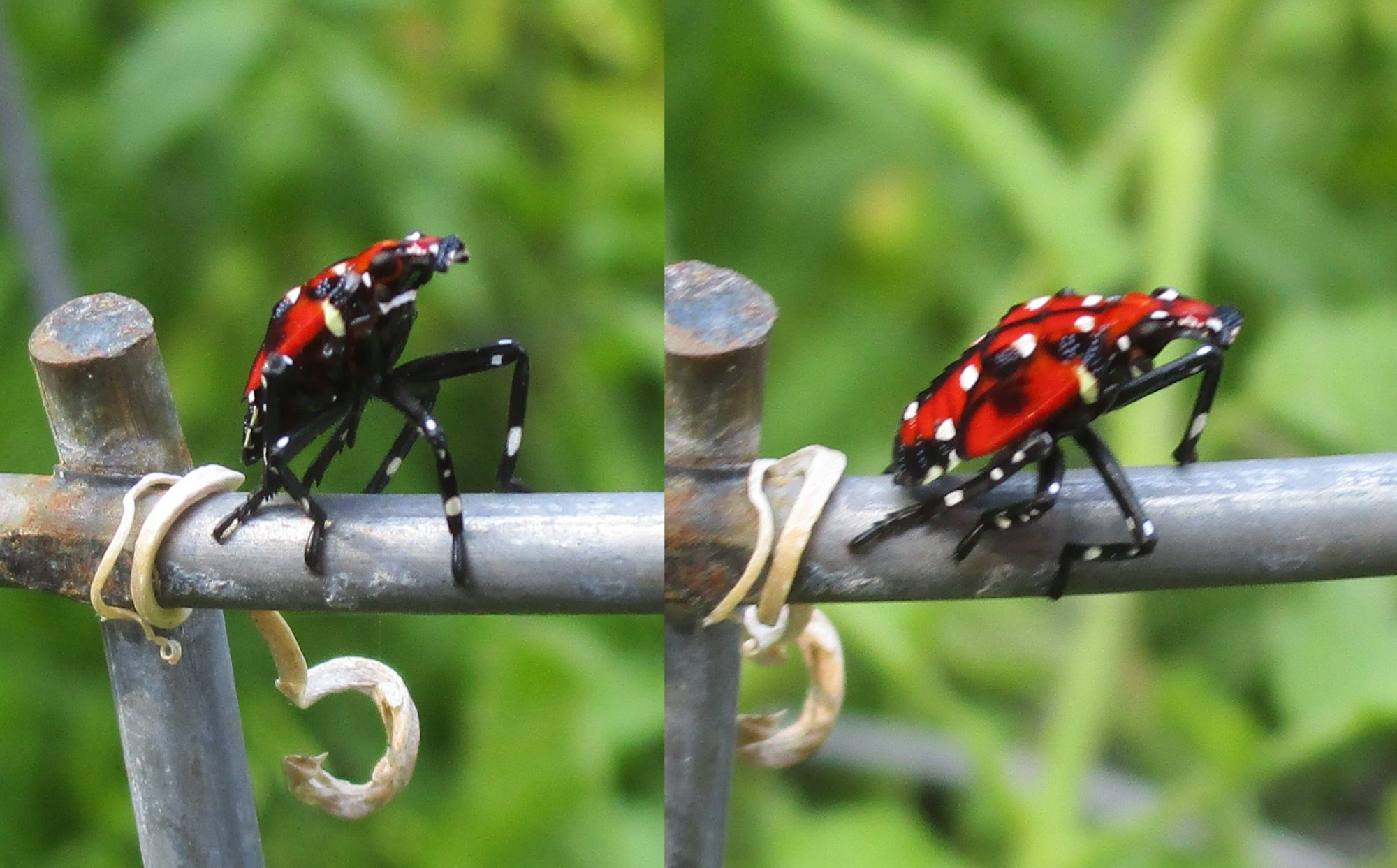
It was in September of 2014 that the spotted lanternfly first appeared suddenly in Berks county Pennsylvania. How it got to that mostly rural part of Pennsylvania is unknown but the eggs of L delicatula are small, laid in egg masses of 30-50, and will stick to almost any smooth, hard vertical surface, even the metal of a motor vehicle.

However it got here, with no predators to control it, the spotted lanternfly has now spread to New Jersey, Delaware, eastern Maryland and Virginia. Already L delicatula has caused an appreciable amount of damage to the wine and fruit industries in the Mid-Atlantic States and will without doubt become even more of a pest in the years to come.
I first spotted some L delicatula nymphs in my garden just a few days ago feeding on a wild grape vine growing along my back fence. So far they haven’t infested any of my vegetables, the insect typically doesn’t attack plants like tomato, potatoes or peppers but you can be certain I’ll be keeping a close watch on my raspberry bushes.
This invasion of the spotted lanternfly reminds me a great deal of the infestation of Japanese Beetles, Popillia japonica, that caused so much damage when I was young back in the 1960s. Like L delicatula the Japanese Beetle somehow got to America, the first discovery was way back in 1916 in New Jersey. Since that time P japonica has spread across the country so that now only nine western states are considered free of it.
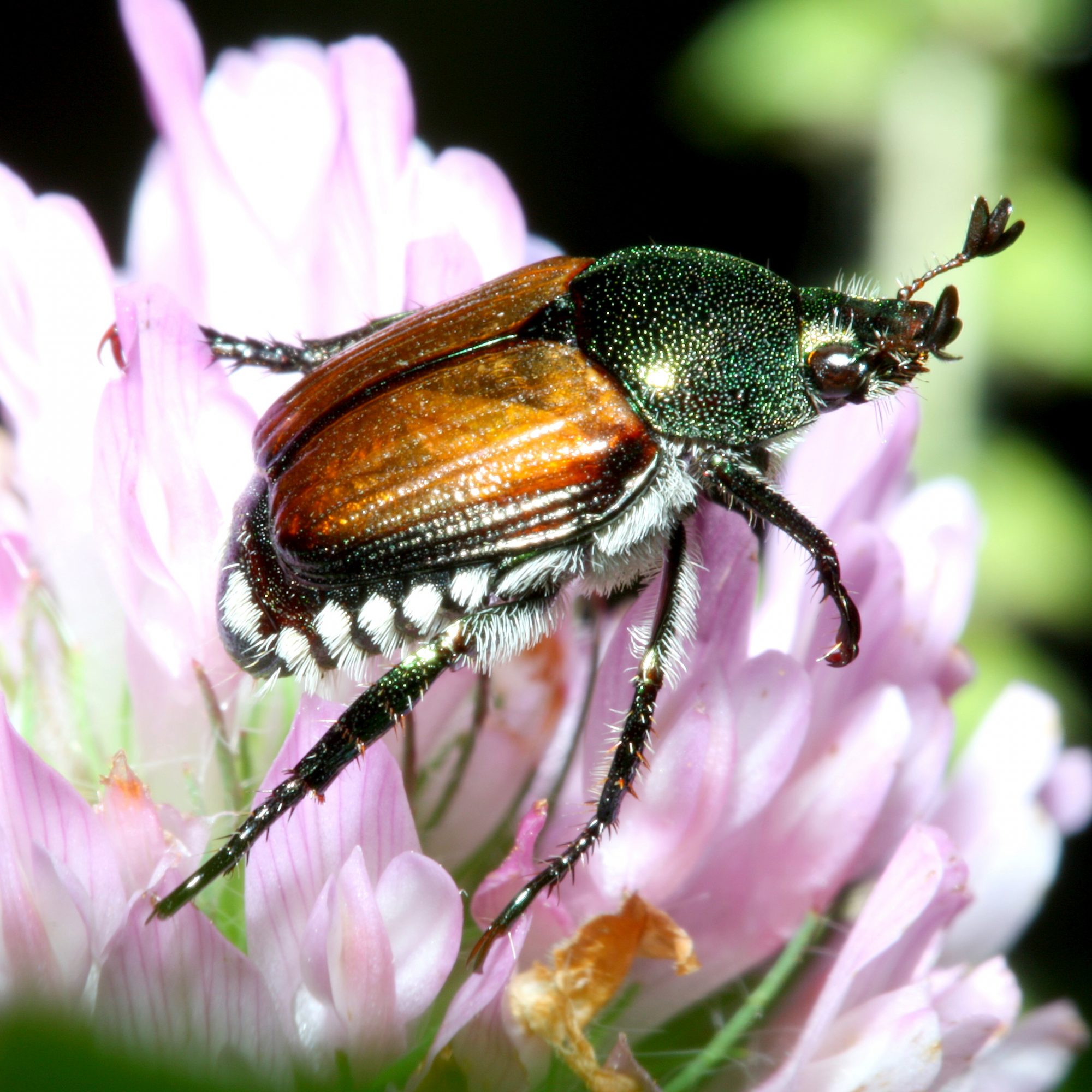
Like the Spotted Lanternfly the P japonica is only a minor pest in its natural environment, natural predators and parasites keep its population under control. Here in North America however the insect bred uncontrollably causing an enormous amount of destruction to a wide variety of plant species.
As a boy my mother kept a fair sized rose garden that she was very proud of. In fact just about every lady on our block had a half dozen or more rose bushes that they tended. So to the ladies of my street the Japanese Beetle was an utter disaster. It became my job every day to pick off all of the beetles that I could find from every rose bush. On some days I filled up a small jelly jar with the pests there were so many of them. In exchange for my efforts each of my neighbors gave me a nickel, hey, when you’re six or seven 25¢ every day was a lot of money.
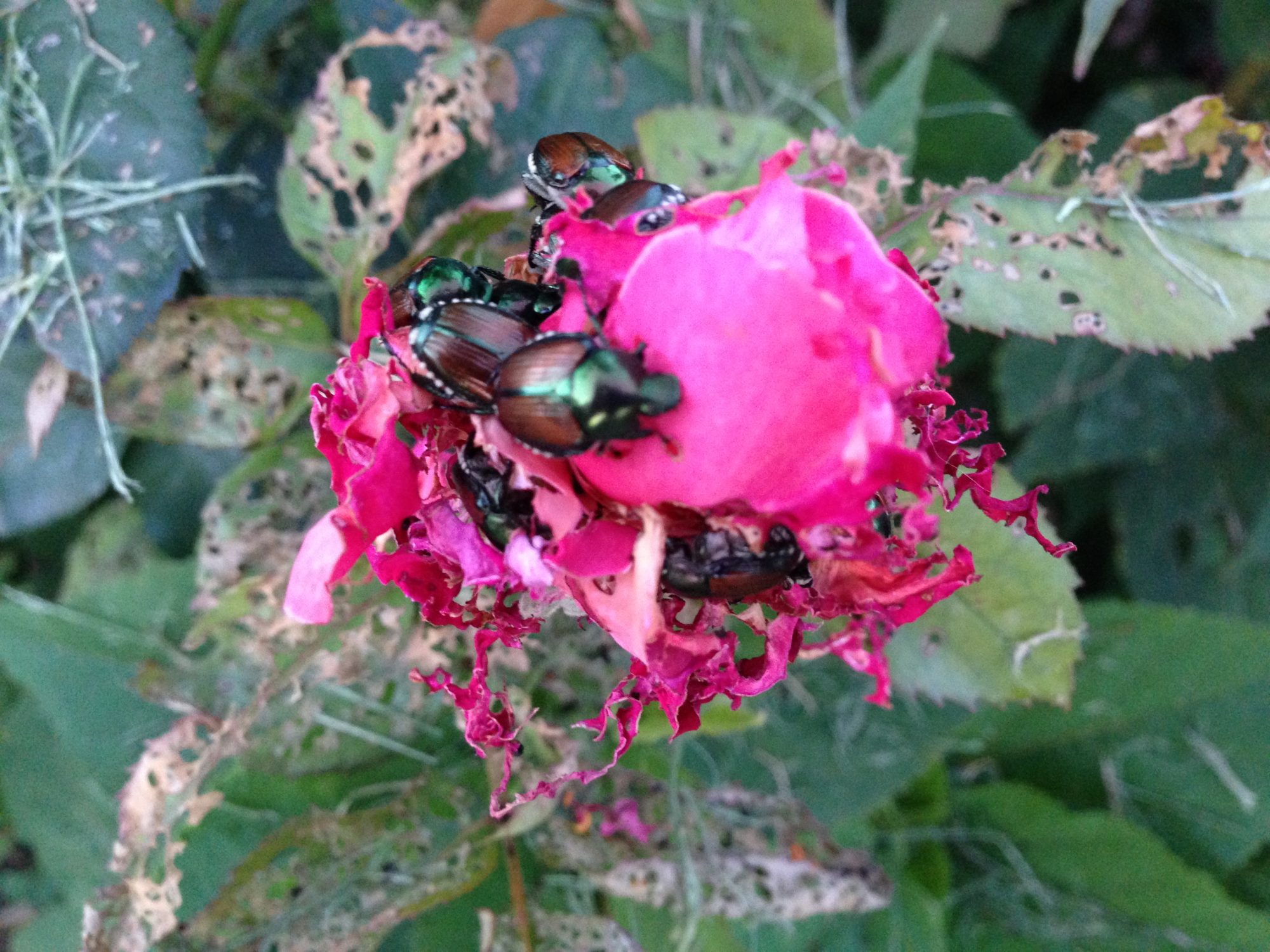
The good news is that by around 1970 the Japanese beetle population began to plummet, some of the local birds and other animals realized that Japanese beetles were tasty and with so many around they represented a lot of food. With some local predators to control their population the threat of Japanese Beetles quickly diminished.
Today Japanese Beetles are actually rare in eastern Pennsylvania; it’s been three years since I last saw one. In the long run this is true of every invasive species, eventually they just become part of their new environment, it’s just a question of how much damage will they do before then. The same thing will happen to the Spotted Lanternfly, someday some species will begin to prey on them and they will become less of a threat, hopefully sooner rather than later.
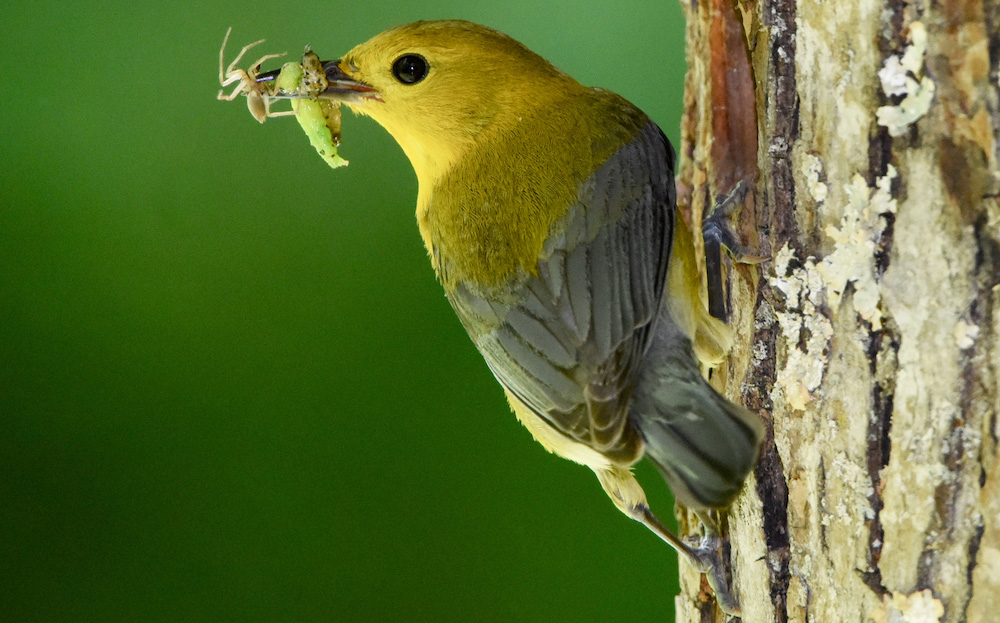
It’s too bad we can’t just tell a few species of bird, hey, eat these things, they’re good!
